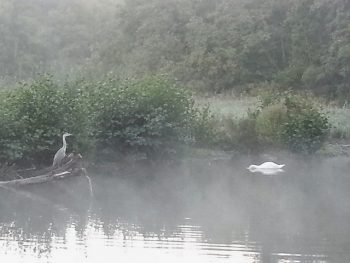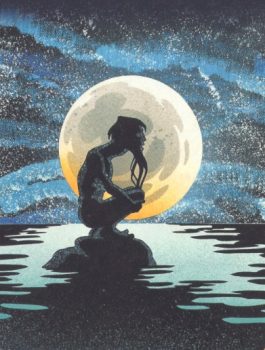Top 6 Danish Monsters Posted by Bjørn A. Bojesen on Sep 29, 2017 in Traditions
There really are two Denmarks: There’s the urban country most tourists see, with street art and vegan restaurants. Then there’s an ancient land of moser (bogs), dybe skove (deep woods) and øde strande (empty shores). Trolde (trolls), nisser and hekse (witches) you’ve already met. Now say hello to these 6 creatures from Danish traditional folklore:
- Helhesten (the horse from Hel, land of the dead). You can hear it before you see it. Since one of Helhesten’s front legs is missing, this ghostly horse really makes some noise as it drags its 3 ill-shod legs across the village brosten (paving stones). Let’s hope you don’t meet it on its nightly church crawl – seeing it is a varsel (omen) of death or disaster.
- Mosekonen (the bog wife). When tågen (the fog) is so thick that people come back telling ”jeg kunne ikke se en hånd for mig” (I could not see my hand in front of me), you know the old saying is true: Mosekonen brygger (the bog wife is brewing). What exactly she is brewing, nobody knows, but it certainly fills Denmark with a lot of dense and damp smoke! 🙂
- Lindorm (Lind worm). A lindorm [LENNoarm] is a bit like a drage (dragon), except it can’t fly or sprude ild (breathe fire – though it does emit a lot of gift, poison). The lindorm resembles a huge snake that grows fatter all the time from all the mennesker (people) it swallows. Lindorme like to coil around kirker (churches) to prevent people from going to gudstjeneste (church sermon).
- Mare. A mare is a kind of heks (witch). At night she enters the places where folk (people) are sleeping. She then sits down on their chest so they can hardly breathe, giving them mareridt (literally mare’s ride) – the Danish word for nightmare.
-
Ellefolk (Elven people). Unlike their English cousins, Danish Elves are not immortal. Ellefolk live in bogs, forests, høje (mounds) and enge (meadows). Their job is to guard the wilderness, so don’t get too close – they might take you captive! People who escape from an elverhøj (elf hill) usually don’t remember anything. They’ve become ellevilde (wild, literally ”elf wild”). Danish elves are sometimes male, but very often female:
- ellepiger (Elven girls). They usually dance in circles in skumringen (twilight), wearing white clothes and slør (veils). They are very beautiful and make human males fall in love with them – until the men catch a glimpse of their backs, which are hollow and rotten like old tree trunks…
- ellekoner (Elven wives). Some are described as ugly, old ”hags” who run across the country with their long breasts thrown over their shoulders. (The old tales are very colourful and not so PC!)
- Havfolk (sea people). Have you seen Den lille havfrue (the little mermaid) yet? A land of shores and islands, Denmark has a lot of sea people – including havmænd (mermen). A famous tale, Agnete og havmanden, tells the story of a girl who is abducted by a havmand (merman) to be his wife and live under havet (below the sea).

Build vocabulary, practice pronunciation, and more with Transparent Language Online. Available anytime, anywhere, on any device.





